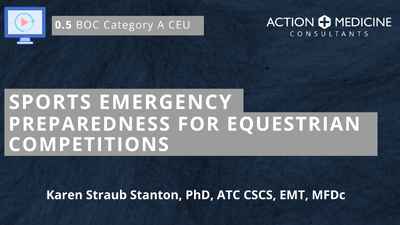AI Chat Bot
Sports Emergency Preparedness for Equestrian Competitions › Learning Material
Presentation (Video)
Updated May 30, 2024
Copyright © 2025 Action Medicine Consultants, LLC
___MESSAGE___
___MESSAGE___


